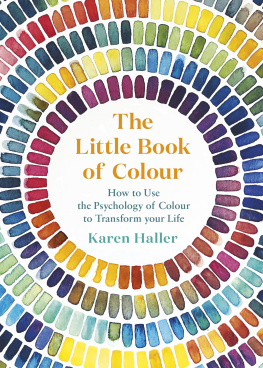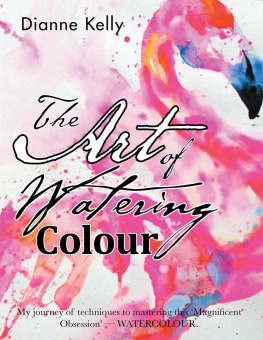Alexander D. Logvinenko - Foundations of Colour Science: From Colorimetry to Perception
Here you can read online Alexander D. Logvinenko - Foundations of Colour Science: From Colorimetry to Perception full text of the book (entire story) in english for free. Download pdf and epub, get meaning, cover and reviews about this ebook. City: Hoboken, year: 2022, publisher: Wiley, genre: Science. Description of the work, (preface) as well as reviews are available. Best literature library LitArk.com created for fans of good reading and offers a wide selection of genres:
Romance novel
Science fiction
Adventure
Detective
Science
History
Home and family
Prose
Art
Politics
Computer
Non-fiction
Religion
Business
Children
Humor
Choose a favorite category and find really read worthwhile books. Enjoy immersion in the world of imagination, feel the emotions of the characters or learn something new for yourself, make an fascinating discovery.

- Book:Foundations of Colour Science: From Colorimetry to Perception
- Author:
- Publisher:Wiley
- Genre:
- Year:2022
- City:Hoboken
- Rating:3 / 5
- Favourites:Add to favourites
- Your mark:
Foundations of Colour Science: From Colorimetry to Perception: summary, description and annotation
We offer to read an annotation, description, summary or preface (depends on what the author of the book "Foundations of Colour Science: From Colorimetry to Perception" wrote himself). If you haven't found the necessary information about the book — write in the comments, we will try to find it.
Presents the science of colour from new perspectives and outlines results obtained from the authors work in the mathematical theory of colour
This innovative volume summarizes existing knowledge in the field, attempting to present as much data as possible about colour, accumulated in various branches of science (physics, phychophysics, colorimetry, physiology) from a unified theoretical position. Written by a colour specialist and a professional mathematician, the book offers a new theoretical framework based on functional analysis and convex analysis. Employing these branches of mathematics, instead of more conventional linear algebra, allows them to provide the knowledge required for developing techniques to measure colour appearance to the standards adopted in colorimetric measurements. The authors describe the mathematics in a language that is understandable for colour specialists and include a detailed overview of all chapters to help readers not familiar with colour science.
Divided into two parts, the book first covers various key aspects of light colour, such as colour stimulus space, colour mechanisms, colour detection and discrimination, light-colour perception typology, and light metamerism. The second part focuses on object colour, featuring detailed coverage of object-colour perception in single- and multiple-illuminant scenes, object-colour solid, colour constancy,
metamer mismatching, object-colour indeterminacy and more. Throughout the book, the authors combine differential geometry and topology with the scientific principles on which colour measurement and specification are currently based and applied in industrial applications.
- Presents a unique compilation of the authors substantial contributions to colour science
- Offers a new approach to colour perception and measurement, developing the theoretical framework used in colorimetry
- Bridges the gap between colour engineering and a coherent mathematical theory of colour
- Outlines mathematical foundations applicable to the colour vision of humans and animals as well as technologies equipped with artificial photosensors
- Contains algorithms for solving various problems in colour science, such as the mathematical problem of describing metameric lights
- Formulates all results to be accessible to non-mathematicians and colour specialists
Foundations of Colour Science: From Colorimetry to Perception is an invaluable resource for academics, researchers, industry professionals and undergraduate and graduate students with interest in a mathematical approach to the science of colour.
Alexander D. Logvinenko: author's other books
Who wrote Foundations of Colour Science: From Colorimetry to Perception? Find out the surname, the name of the author of the book and a list of all author's works by series.













